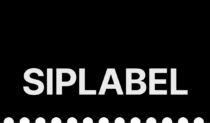WINE LABELLING
Are you ready for the new
EU wine labeling regulation?
Did you know that the new EU wine labeling regulation will be in force soon? No?
Then be sure to read this article, because as a wine producer or distributor you should prepare yourself for the changes it brings. These will affect you and your customers alike.
In the past, winemakers in the EU have not been obliged to indicate the composition and nutritional information on wine labels. They have therefore been at a slight advantage compared to other food producers in this respect. However, this is changing, and from December 2023, all wine producers selling their products in the European Union will be legally obliged to provide consumers with the allergen, energy, ingredients, and nutritional information on their labels.
These changes were brought about by the reform of the EU's Common Agricultural Policy (CAP). Its legal framework was published on 6 December 2021 and is effective from 1 January 2023. Consultation on the modernization of the CAP started in 2017, and the regulators completed the legislative process at the end of 2021. The current CAP regulates the 2023-2027 period.
This reform consists of several changes to existing regulations. The labeling of wine is regulated by EU Regulation 2021/2117 (you can read it at this link). This regulation amends four older regulations: EU Regulations 1308/2013, 1151/2012, 251/2014, and 228/2013.
EU wine labeling regulation news
Key points of the new rules on the use of wine labels are:
- The list of allergy-causing ingredients and the energy value must appear on the printed label directly on the bottle.
- Electronic labels cannot contain any other information for sales or marketing purposes.
- No consumer data can be collected or tracked through electronic labels.
- These requirements apply to all new bottles of wine placed on the EU market, whether produced in the EU or imported from a third country, including wines produced in the European Union and exported outside the European Union.
- The wine produced and labeled before 8 December 2023 may continue to be placed on the EU market with the original label until stocks are exhausted.
The new legislation clearly defines what information must appear on wine labels and what information can be provided electronically - that is, by an electronic label (e-label) via a QR code. While the information on allergens and energy value must be printed directly on the label, information on the ingredients and nutritional information can be provided electronically via a QR code containing a link that leads to the e-label - a website containing the required information located independently of the wine producer's sales and marketing presentation. The content of the physical labels placed on the wine bottle can therefore be limited to a declaration indicating the energy value using the 'E' symbol.
Digital technology makes it easier
A QR code or a link to an electronic label cannot lead the consumer to a regular wine producer's website. The websites and apps of producers and their brands contain information and content for sales and marketing purposes. And they almost always collect user data through interactions with websites and apps designed for that purpose. Even the routine use of Google Analytics is non-compliant with EU requirements. Therefore, e-labels require a platform without sales or marketing content and user tracking features.
Although using e-labels increases winemakers' administrative and technological burden, they have undeniable advantages that printed labels do not offer. Winemakers can show their consumers the desired information in a way that does not visually disrupt the design of existing bottle labels. They save the cost of printing and disposing of unused labels. In addition, they can automatically provide information in the different languages used in the European Union. But even the problems of a heavier burden on the administration and the technology are easily solved. By partnering with us, winemakers gain access to Siplabel's straightforward online tool, which shifts the worry to us. Siplabel manages e-labels, generates QR codes, automatically translates information into all official EU languages, and delivers it to users in real time once the QR code is scanned, without breaking the rules set by the new EU wine labeling regulation.
Be ready for the new legislation and register here.

